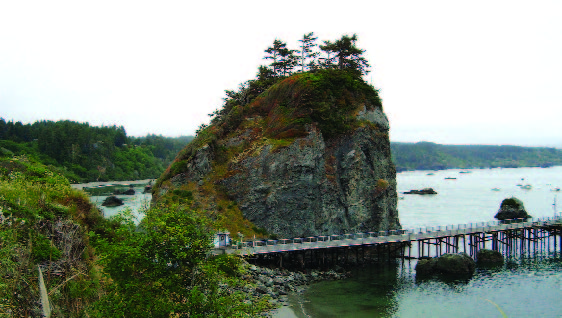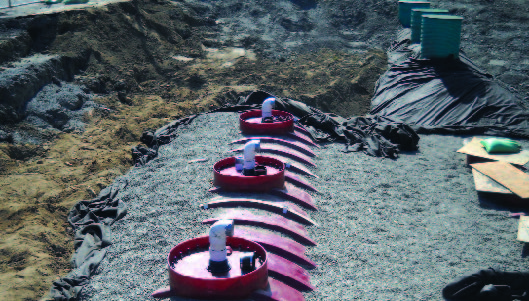
Low Total Nitrogen Requirements for the North Coast RWQCB
SERVICE: Construction; Start-up / Operations
TECHNOLOGY: Denitrification
SUSTAINABLE/WATER RE-USE: Sustainable Media/Natural Treatment


LOCATION: Trinidad, CA
DESCRIPTION: IWS designed the treatment system to meet the NCRWQCB requirements while accommodating the site constraints and anticipated flows from the expansion.
IWS was a great resource for the project team and provided an excellent perspective for design and construction aspects of the project, we really valued their input and expertise. We also are very pleased with the final product and have realized our dream for a state-of-the-art treatment system for the Trinidad Harbor area
The Seascape Restaurant, a popular eatery overlooking the harbor and lighthouse in Trinidad, CA, needed to upgrade their existing wastewater treatment system to meet the North Coast Regional Water Quality Control Board (NCRWQCB) discharge requirements for the planned system expansion. The site is located in an area of special biological significance (ASBS) and must meet low Total Nitrogen limits. After considering 20 year life cycle costs, capital cost, ease of maintenance, and other evaluation criteria, the IWS Denitrification Upflow Filter was selected as a critical component of the treatment solution.Prior to the upgrade, the facility wastewater treatment system consisted of a grease tank, primary tank, and pressure dosed leach field. The existing system was treating the restaurant and two private cottages on the property, and was being expanded to include a public restroom to service the adjacent harbor area. The design flow of the upgraded system is 5,000 gpd of relatively high strength wastewater with peak flow of 10,000 gpd.
IWS worked as a subcontractor to the Project Civil Engineer, Pacific Affiliates (Eureka, CA), to assist in the design of the onsite wastewater treatment system. IWS designed the treatment system to meet the NCRWQCB requirements while accommodating the site constraints and anticipated flows from the expansion.
, COO of IWS, commented on the denitrification system, “The IWS Upflow Filter provided the Owner a capital cost savings as well as a significant O&M savings over the life of the system versus other available denitrification technologies. By providing our denitrification polishing process the Owner was able to utilize a more passive treatment system to meet their needs, which magnified the overall project savings.”
The new treatment system includes the following: a new 6,000 gallon grease interceptor; 15,000 gallon primary tank; 8,000 gallon recirculation tank; 7 Advantex AX-100 pods; 8,000 gallon denitrification upflow filter system; 8,000 gallon dosing tank; UV disinfection; and 9,500 ft2 low dose disposal field. The new treatment system will be started up in October 2010. The system was designed to meet the following discharge requirements: 30/30/10 (BOD/TSS/Nitrate as Nitrogen) and E. Coli Bacteria of 200 organisms per 100 mL. The IWS DenitrificationUp flow Filter was distributed through Chris Hartman of Jensen Precast (Orland, CA office).
Due to space limitations, the IWS Upflow Filter was configured in an 8,000 gallon Xerxes tanks and located in the parking lot area adjacent to the restaurant. The Upflow Filter media was designed for a 10 year life based upon the anticipated wastewater characteristics and denitrification loading for the system.
Seascape Restaurant is owned by the Cher-Ae Heights Indian Community of the Trinidad Rancheria (Trinidad Rancheria), a federally recognized Indian Tribe. The wastewater project was financed through AARA funding. Jacque Hostler, CEO of the Trinidad Rancheria said of the project, “IWS was a great resource for the project team and provided an excellent perspective for design and construction aspects of the project, we really valued their input and expertise. We also are very pleased with the final product and have realized our dream for a state-of-theart treatment system for the Trinidad Harbor area.”
For more information, please click the ‘Contact’ tab to reach out to us.

